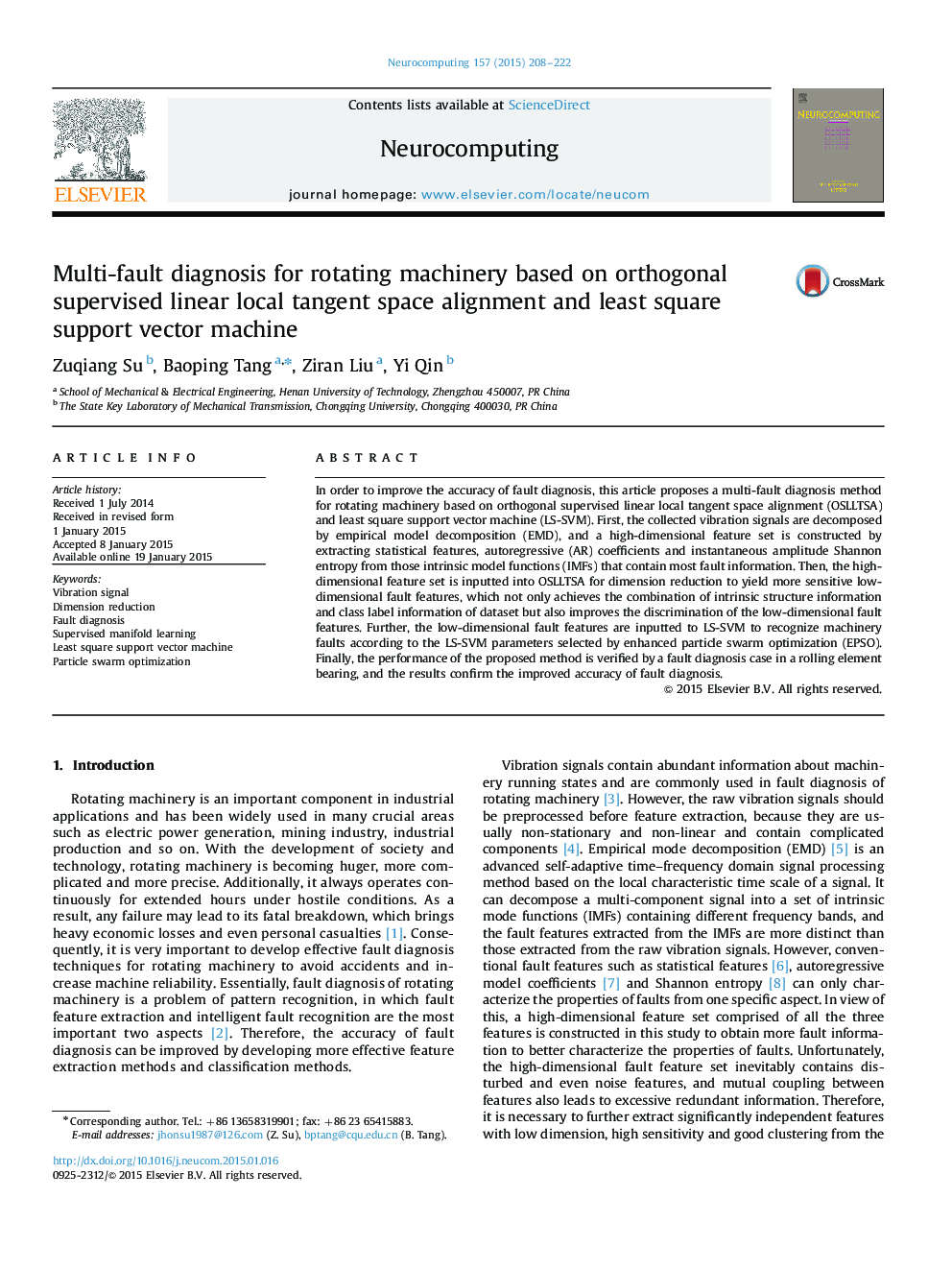| Article ID | Journal | Published Year | Pages | File Type |
|---|---|---|---|---|
| 409395 | Neurocomputing | 2015 | 15 Pages |
•A multi-fault diagnosis model is proposed based on OSLLTSA and optimized LS-SVM.•OSLLTSA is proposed for feature compression of high-dimension feature set.•LS-SVM is employed as fault identification method.•EPSO is proposed for parameter selection of LS-SVM.
In order to improve the accuracy of fault diagnosis, this article proposes a multi-fault diagnosis method for rotating machinery based on orthogonal supervised linear local tangent space alignment (OSLLTSA) and least square support vector machine (LS-SVM). First, the collected vibration signals are decomposed by empirical model decomposition (EMD), and a high-dimensional feature set is constructed by extracting statistical features, autoregressive (AR) coefficients and instantaneous amplitude Shannon entropy from those intrinsic model functions (IMFs) that contain most fault information. Then, the high-dimensional feature set is inputted into OSLLTSA for dimension reduction to yield more sensitive low-dimensional fault features, which not only achieves the combination of intrinsic structure information and class label information of dataset but also improves the discrimination of the low-dimensional fault features. Further, the low-dimensional fault features are inputted to LS-SVM to recognize machinery faults according to the LS-SVM parameters selected by enhanced particle swarm optimization (EPSO). Finally, the performance of the proposed method is verified by a fault diagnosis case in a rolling element bearing, and the results confirm the improved accuracy of fault diagnosis.
